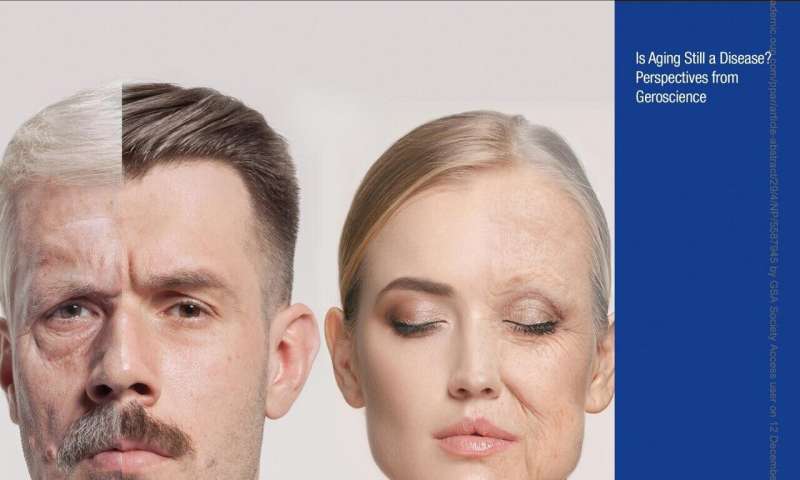Is targeting aging the future of medicine? Researchers make the case

Human life expectancy worldwide rose dramatically over the past century, but people's health spans—the period of life spent free from chronic, age-related disease or disability—have not increased accordingly.
But in the latest issue of the journal Public Policy & Aging Report (PP&AR) from The Gerontological Society of America, experts demonstrate that through interventions that impact the aging process itself, rather than through a focus on individual diseases, the scientific community can achieve a greater impact on both life and health expectancies.
Titled "Is Aging Still a Disease? Perspectives from Geroscience," the journal highlights existing studies as well as recommended areas for further research.
"Twenty-first century medicine should adopt the strategy of directly targeting the molecular mechanisms that cause biological aging," wrote guest editor and University of Washington Professor Matt Kaeberlein, Ph.D., FGSA, in his introduction. "Only in this way will it be possible to slow the onset and progression of multiple age-related diseases simultaneously, in order to extend the health span proportionately with the life span."
Among the six articles that follow, the authors write that aging itself is not a disease, but rather is the biggest risk factor for a wide range of chronic diseases. This is a central tenet of the emerging field of geroscience, which seeks to define the biological mechanisms that underly the diseases of aging—with the goal of slowing human aging to delay or prevent many diseases simultaneously.
"The impacts on life and health expectancies from targeting aging are much greater than waiting until people get sick and trying to cure or ameliorate their individual diseases," Kaeberlein wrote. "Instead of increasing life expectancies by only a few years from curing one disease, delaying aging could increase life expectancies by a few decades. Importantly, those added years would be spent in relatively good health, because instead of only fixing one disease, all of the functional declines and diseases of aging would be targeted simultaneously."
The contents of the new PP&AR:
- "It is Time to Embrace 21st-Century Medicine," by Matt Kaeberlein, Ph.D., FGSA
- "The Longevity Dividend: A Brief Update," by S. Jay Olshansky, Ph.D., FGSA
- "Time for a New Strategy in the War on Alzheimer's Disease," by Matt Kaeberlein, Ph.D., FGSA
- "Is Old Age or Aging a Disease, in a Literal or a Metaphorical Sense?" by Stephen B. Kritchevsky, Ph.D., FGSA
- "Is Aging a Disease? A Geriatrician's Perspective," by Peter A. Boling, MD
- "A Regulatory Pathway for Medicines That Target Aging," by G. Alexander Fleming, MD, Jennifer H. Zhao, BA, Thomas C. Seoh, JD, and Nir Barzilai, MD,
- "International Investment in Geroscience," by Sean X. Leng, MD, Ph.D., FGSA, and Brian K. Kennedy, Ph.D., FGSA
More information: Matt Kaeberlein. It is Time to Embrace 21st-Century Medicine, Public Policy & Aging Report (2019). DOI: 10.1093/ppar/prz022


















